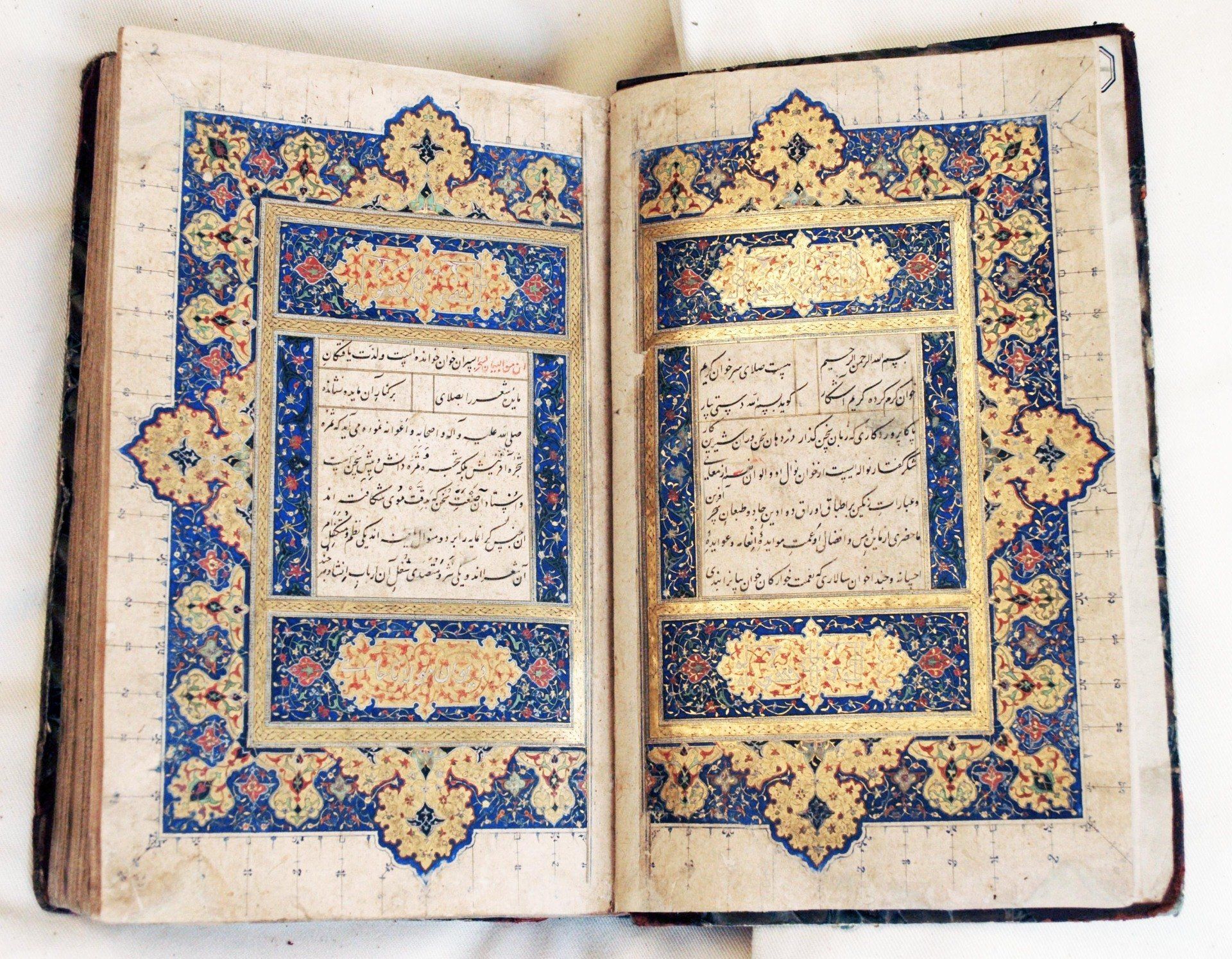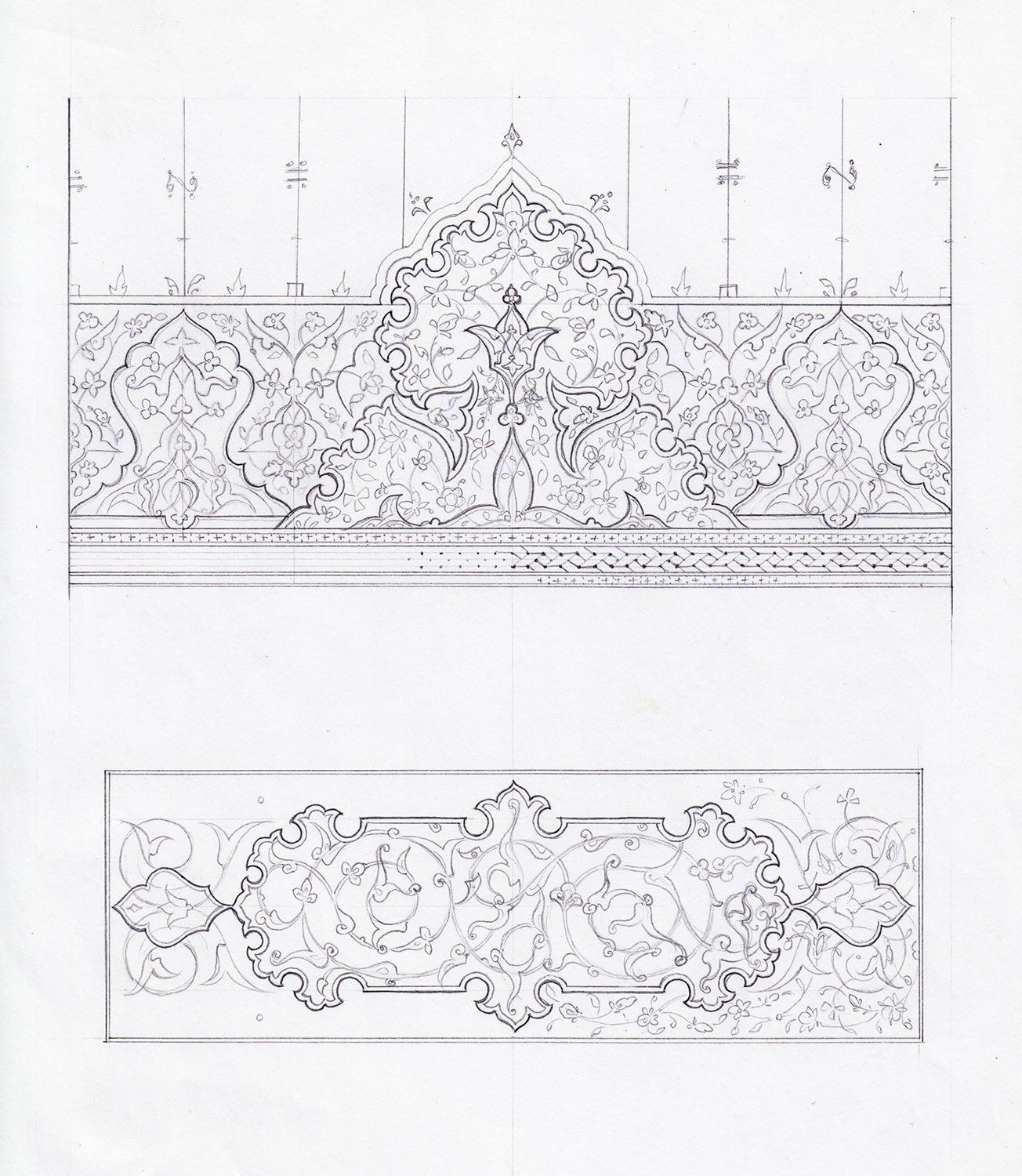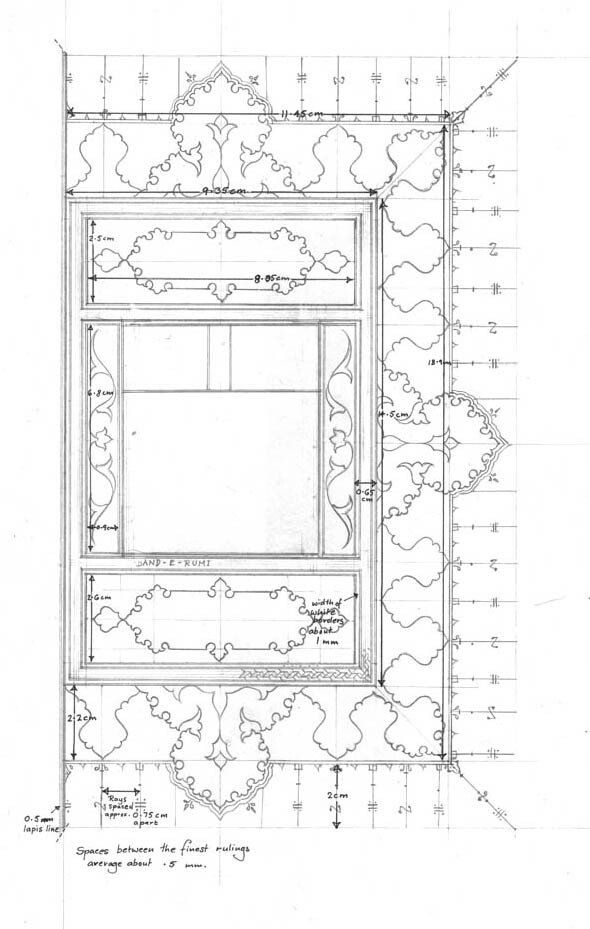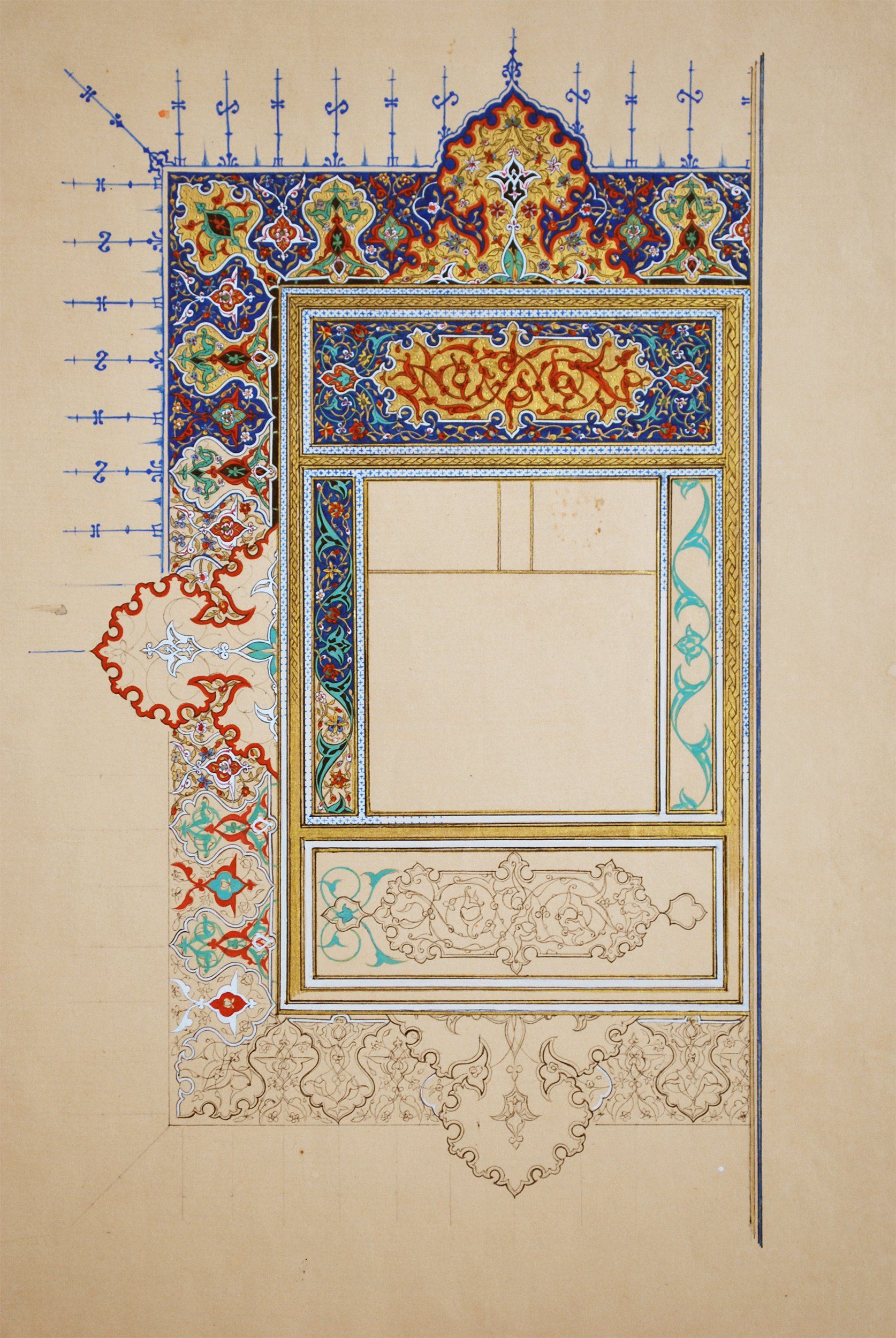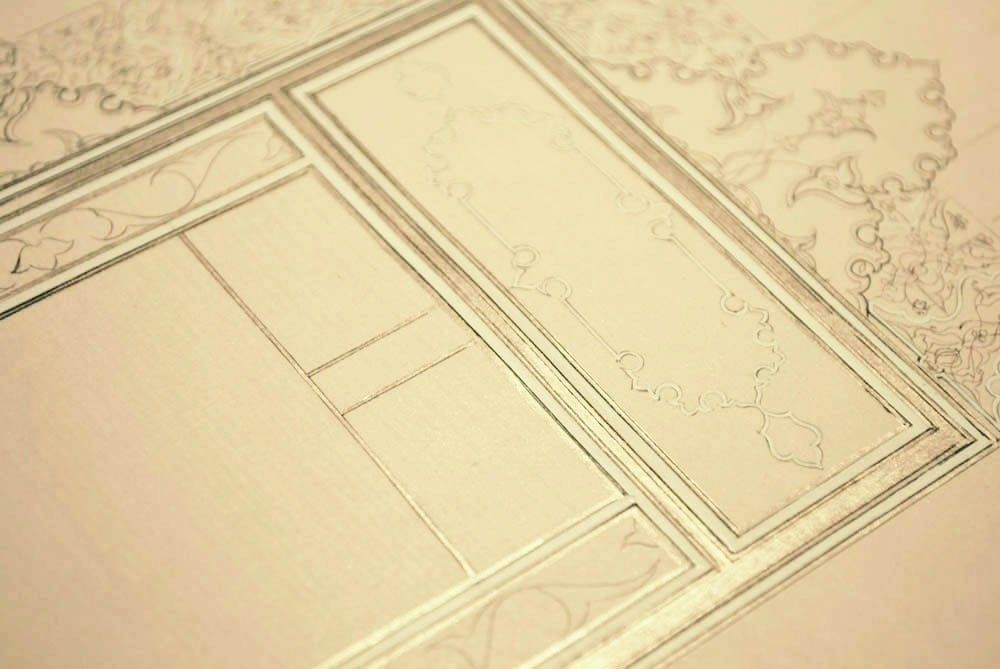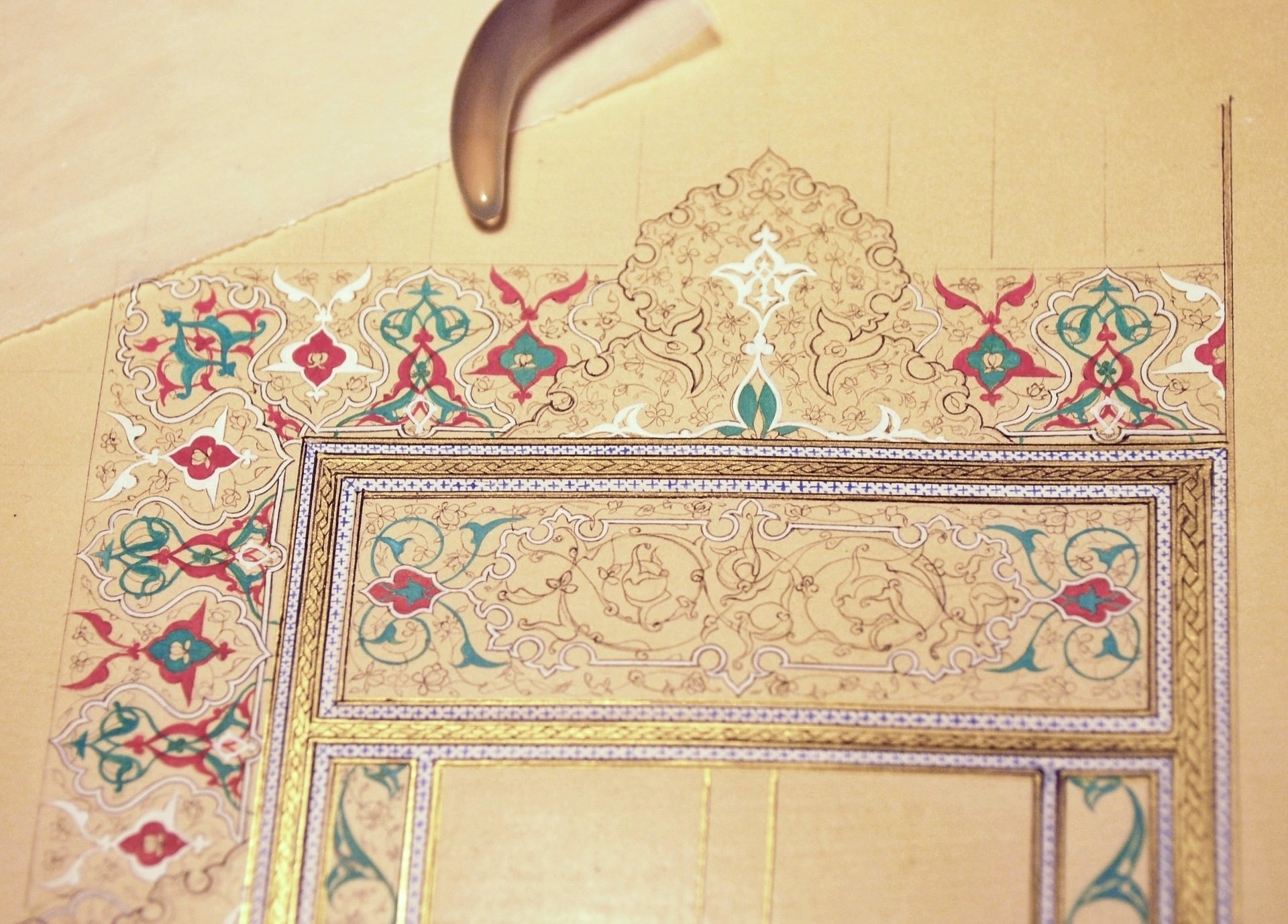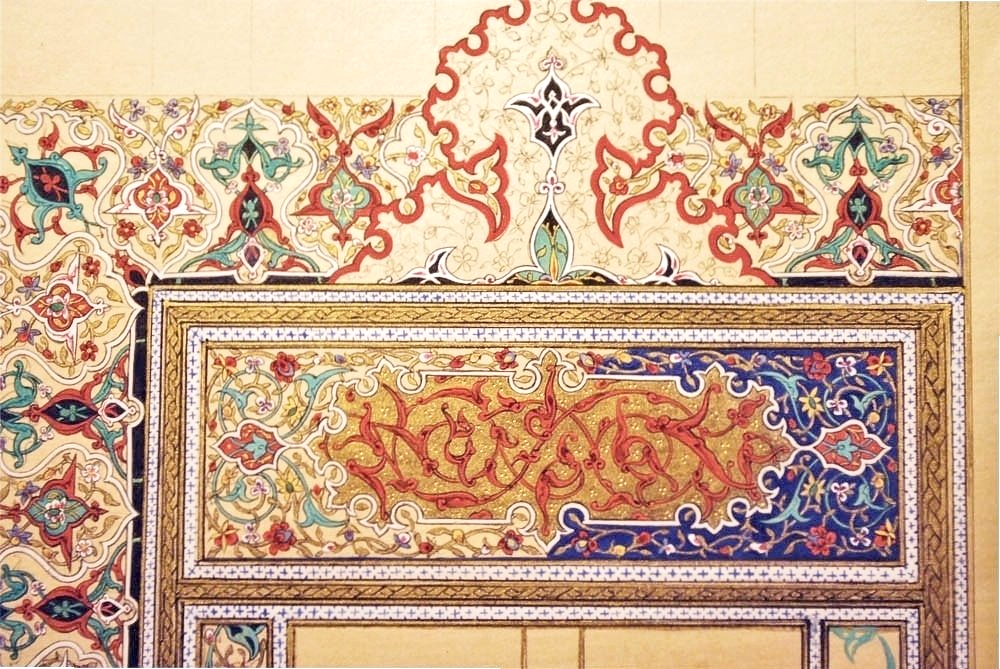ANITA CHOWDRY
VISUAL ARTIST
ISLAMIC ILLUMINATION
Examining high quality historical manuscripts reveals a great deal about the design structure, working methods, and materials employed by artists and craftsmen in the princely ateliers. It also teaches us about the different styles, depending on the geographical location and historical period of the patrons.
I use non-invasive visual methods of analysis, including observing the deteriation of pigments, measuring and drawing, and photography. In re-creating sections of folios using methods and materials authentic to the period, I seek to gain a more thorough understanding of the art of the illuminator.
FRONTISPIECE OF A DIVAN OF JAMI, 1534-5 C.E.
-
DIVAN OF JAMI, 16TH CENTURY
ButtonManuscript at the School of Oriental and African Studies, University of London.
-
DETAIL DRAWING
ButtonDesigns of the headpiece and cartouche.
-
SCALE DIAGRAM OF LAYOUT
ButtonKey features and measurenents of the design.
-
RECREATED ILLUMINATION
ButtonDetail from headpiece of the illumination.
RECREATION OF LEFT FOLIO
Left folio of double-page frontispiece.
The book is a copy of a collection of poems by Jami, a 14th century Sufi mystic. This manuscript was completed in Herat in 1534 -5 for a princely patron, and is now part of the collection of the School of Oriental and African Studies, University of London.
The folios measure H. 23.5cm. X W.14.5cm., the illumination block on each folio are H. 19cm. X W.7.5cm. The re-creation is to scale. Below is a visual description of the processes.
RE-CREATION OF THE ILLUMINATED PAGE
-
DRAFTING THE DESIGN
ButtonRuling and brush-drawing on sized and burnished paper
-
FILL WHITE AND GOLD LINES
ButtonWhite and gold lines filled in and burnished
-
PRICKING PATTERN GUIDE
ButtonUsing a stylus to indicate guide for interlace pattern
-
BLOCKING IN COLOURS
ButtonThe work is burnished with a polished agate tool
-
APPLYING CARTOUCHE DESIGN
ButtonRed Arabeasque on polished gold ground. Pricked to add texture.
-
APPLYING LAPIS LAZULI GROUND
ButtonLapis lazuli goes on last
-
GOLDEN TAJ
ButtonFinishing the pattern with burnishing and pricking.
-
PIGMENTS AND GOLD
Button16th century pallette of mineral colours and gold
- The paper was lightly dyed with henna, sized with gum Arabic solution, and burnished.
- Lines are rulled first with black pigment and a ruling pen.
- The pattern-drawing is done with black pigment and a fine brush.
- Design elements in green, red and white are blocked in first.
- The lapis lazuli base is added last.
- The pallette consist of ground 24 ct. gold, lapis lazuli, copper verdigris, lead white and purified cinnabar.
- The colours and gold are polished with an agate burnisher after application.
- Pricking the surfaces with a stylus adds texture to the design.
Copyright: Please feel free to share on social media, provided that full and clear credit is given, and with appropriate site-direction to the original content.
For Reproduction, please seek permission and assistance from the owner and author of this site, Anita Chowdry.
Anita Chowdry
